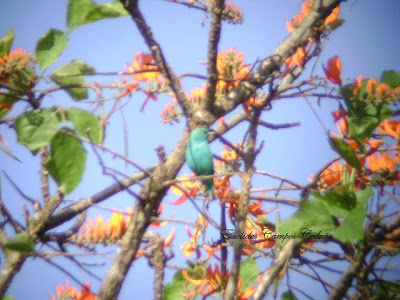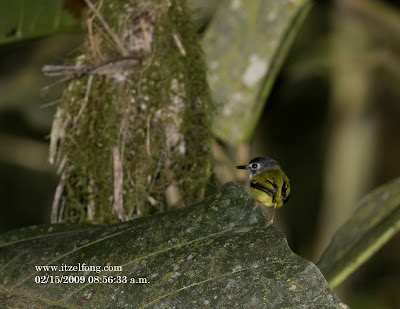Frank Gray and Glen Sibbald sent in this report for a Crimson-bellied Woodpecker seen at Cerro Azul's Río Mono trail. Date of observations: January 2, 2009 Observers: Frank Gray and Glen Sibbald Time of Observation: About 2:55 pm Panama time Location of Observations: GPS coordinates N 0922527, W 07943027, Rio Mono Trail, Altos de Cerro Azul, Panama. I don't know the elevation at that location, unfortunately, but I am sure that it can be determined. Weather Conditions: Partly cloudy, no rain or drizzle, no wind Identifying Characteristics: Was a large woodpecker, about the size of the Pileated Woodpecker of North America or slightly smaller. It had a red crest and a white strip on the side of the head. The belly was a rusty red color just like in the "Birds of Panama" book. Miscellaneous aspects of Observation: The bird was first seen by Glen as both of us were walking back towards the entrance of the Rio Mono Trail. He observed the bird for about 1 min...





